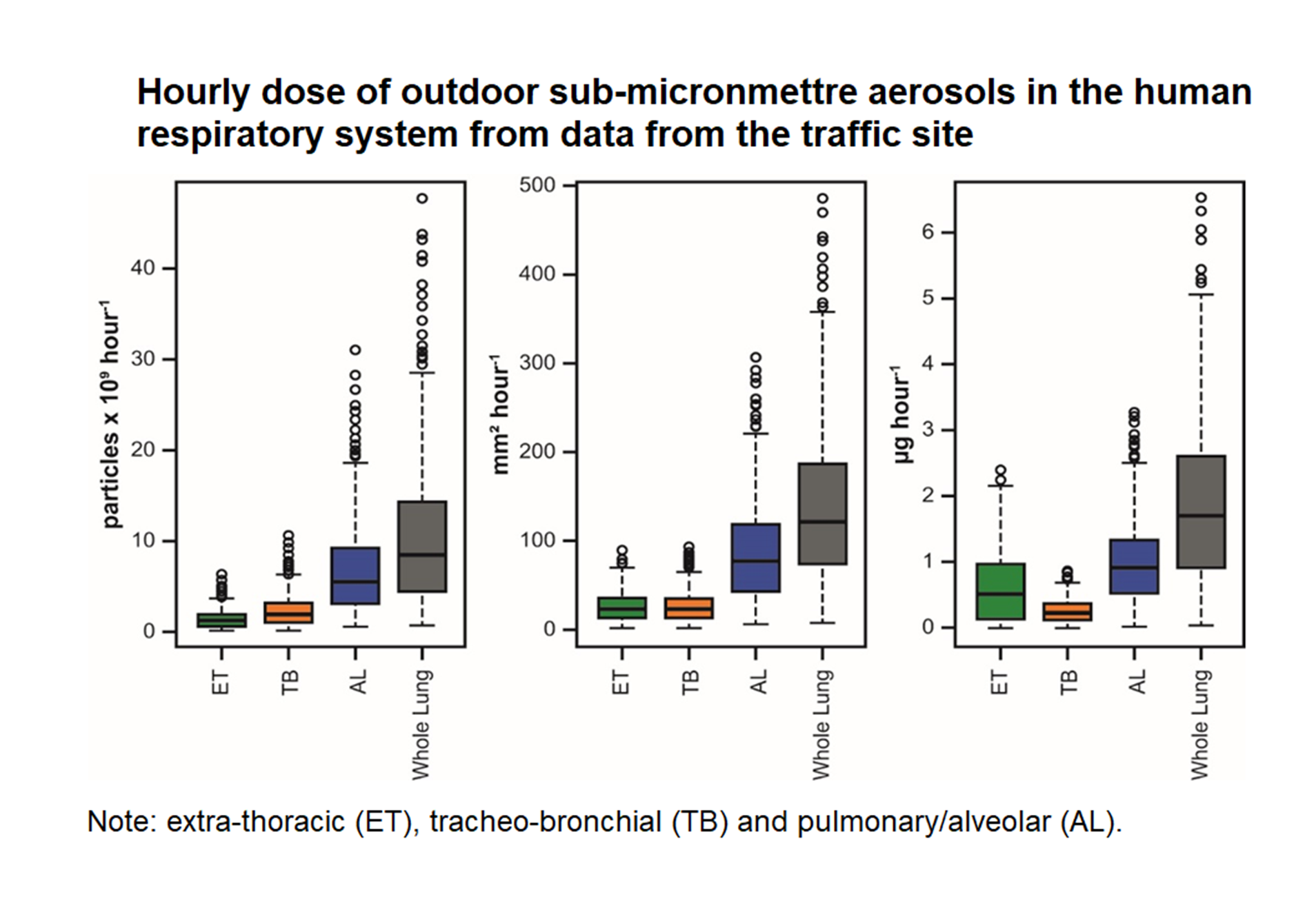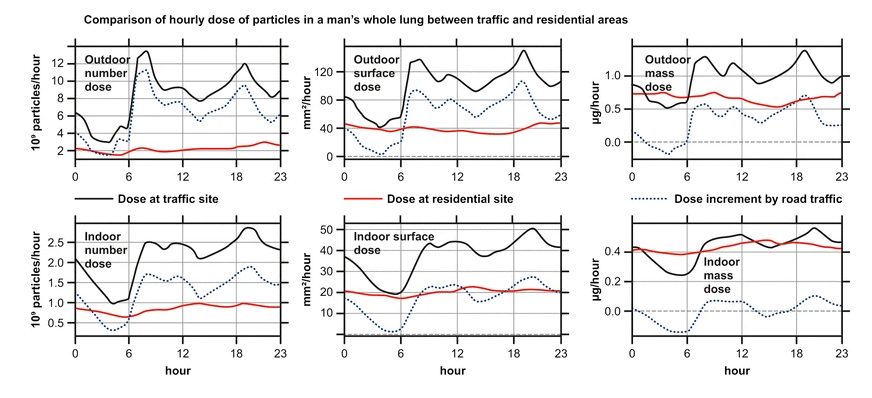How many particles deposit in our lung every hour?
The answer: The number is Billions particles!!!
Our study found that there are 10 billition particles deposited in our lung if we expose to air pollution at a traffic area. A majority (>65%) of particles by number and surface area were found to deposit in the alveolar region (deep region of our lung). The physical properties of particles such as shape, hygroscopicity and density play an important role in particles’s behavior when they penetrate into our respiratory system (Fig.1).
 Fig. 1. Hourly dose of outdoor aerosols in the human respiratory system from data from the traffic site, by number (left panel), surface area (central) and mass (right panel).
Fig. 1. Hourly dose of outdoor aerosols in the human respiratory system from data from the traffic site, by number (left panel), surface area (central) and mass (right panel).
What is the difference of exposure to air pollution between traffic and residential areas?
Due to traffic emissions, the lung dose of outdoor aerosols in the traffic area was much higher than that in the residential area by 5 times for number and surface area and twice times for mass (Fig.2).
Difference between Outdoor and Indoor expsoure? Which can be a good indicator metric for predicting the health outcomes of traffic-generated aerosols?
The doses of indoor sub-micrometre aerosols are less than those of outdoor aerosols by factors of 4.1 (for number), 2.7 (for surface area) and 2.1 (for mass). Particle number can be used as an indicator for predicting the number dose, while PM2.5 and PM10 have good correlations with the surface area and mass dose. Due to the high correlation with the lung dose (r2 = 0.7 for number, > 0.8 for surface area and mass), NOx could be a good proxy for predicting the lung dose of particles of sub-micrometre diameters.
 Fig 2. Hourly outdoor/indoor dose in the whole lung for a man standing in the traffic and residential areas.
Fig 2. Hourly outdoor/indoor dose in the whole lung for a man standing in the traffic and residential areas.

Leave a comment